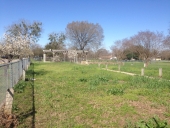Marty Mitchell wrote:It is low/no impact... so it is easy on the joints. In fact, I am out of shape, and after my first half-day on the water I covered around 5-7mi and my legs felt like they were made of rubber afterwards. However, I never got sore! ( I am old enough to stay sore for weeks after working out) It was like taking a walk for 5hrs (with lots of fishing breaks). In the days following I began to have more energy and for some reason my lower back pain has started to go away. It may be what I needed!
All pedal and some paddle driven kayaks have large comfortable seats with lumbar support for those long days on the water.
Hey Marty! I'm really interested in this part of your story. I'm a Postural Alignment Specialist (PAS) certified through the Egoscue Institute, and I think I can actually explain why this contraption has helped your low back pain

.
My first question, though: Can you share a picture of the seat you're using? Also, if you're comfortable with it, could you share a sideview photo of yourself, from your head to your feet, and shirt tucked in?
Sounds crazy, but my theory is that, if your seat is gently pushing your low back so that your hips roll forward over your thighs, (what is called "hip flexion") and you're lifting your legs to pedal your boat, you're actually positively activating your iliopsoas, which is contributing to the reduction in back pain.
How, you ask?
"Iliopsoas" is the combo name for the psoas and the iliacus, which both converge together at the gluteal tuberosity of your femur (basically, the inner part of your femur, up real high). Above that, your iliacus connects to the inside part of your hips, and your psoas connects to ALL your lumbar vertebrae, and down to that gluteal tuberosity, too.
Your psoas acts as a hip flexor, meaning it helps you pick your legs up. When your hips are rolled forward (in "hip flexion"), like what's likely happening with your seat, that psoas muscle gets REALLY activated!
Here's the cool part: Without seeing you, I'd guess that your low back pain was originated from having misaligned hips, and that your femurs turn out (ever notice if your kneecaps appear to turn outward, by any chance?). BUT, we can actually change our structure (like misaligned hips and femurs) through activating muscles in our body.
What it sounds like you've done is you've activated your iliacus and psoas, by rolling your hips forward and lifting your legs. That psoas muscle is gently working on both your lumbar vertebrae and femurs (remember: It's attached to both!), and your iliacus is working on your hips and your femurs, every time you lift your legs to power your boat!
The ultimate result is that your lower back pain is improved, because your body has been starved for some "nutritious movement" in those areas, and your low back has been the sufferer for it. Now that you've reintroduced movement into those muscles, they're getting a chance to do their rightful jobs again, and are loving it.
Anyway, that's not an official diagnosis, and maybe that doesn't make much sense when written out, but I thought you might like to know why this is likely working for you! I love stuff like this, so I just had to share

. Glad to hear you're feeling better and are enjoying your time on your new kayak!


 .)
.)

 .
.
 . Glad to hear you're feeling better and are enjoying your time on your new kayak!
. Glad to hear you're feeling better and are enjoying your time on your new kayak!

 .
.